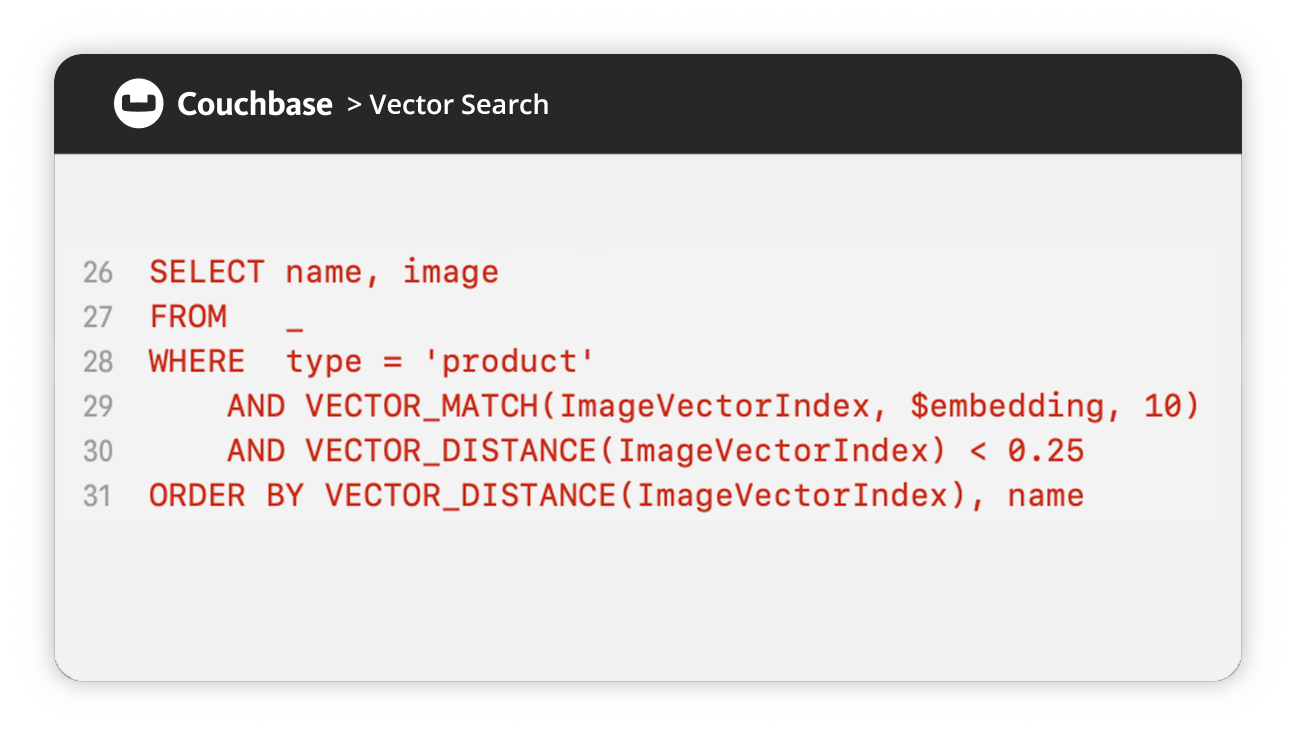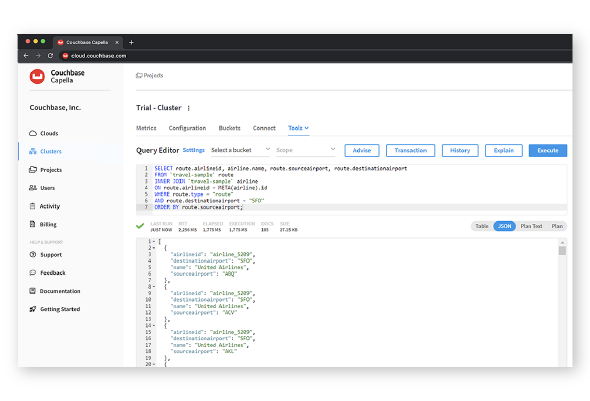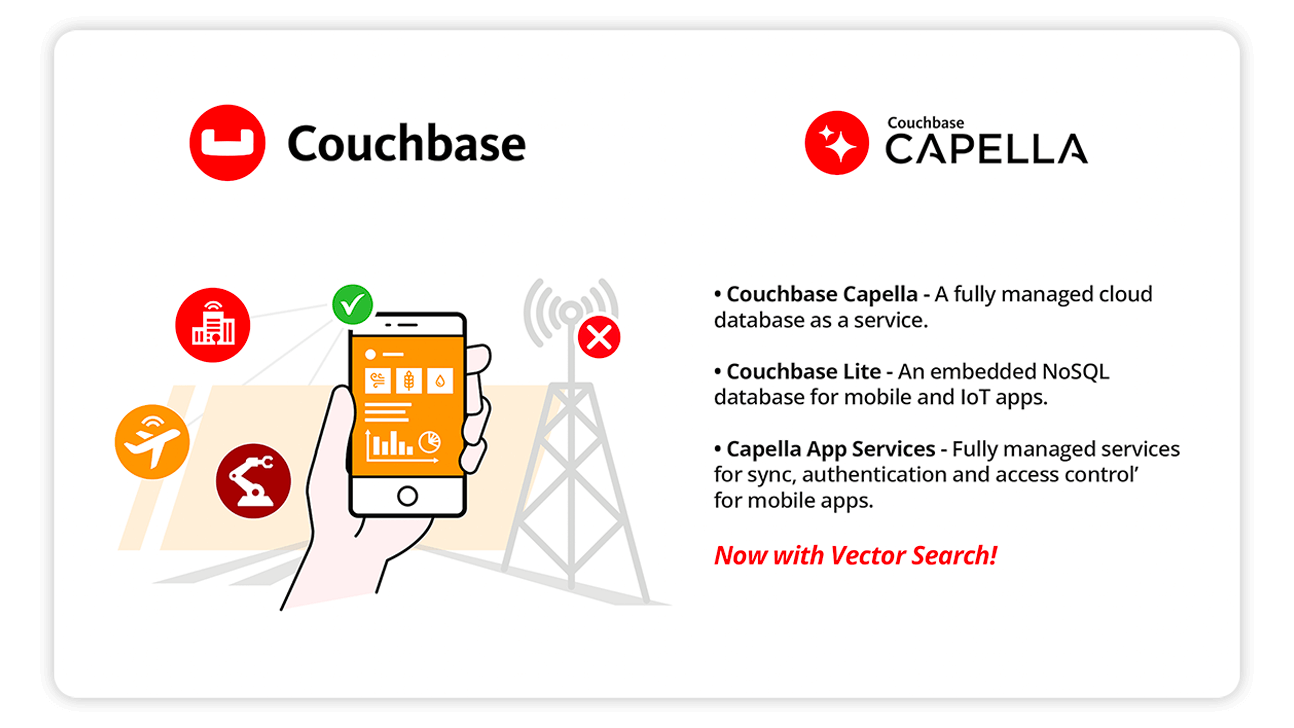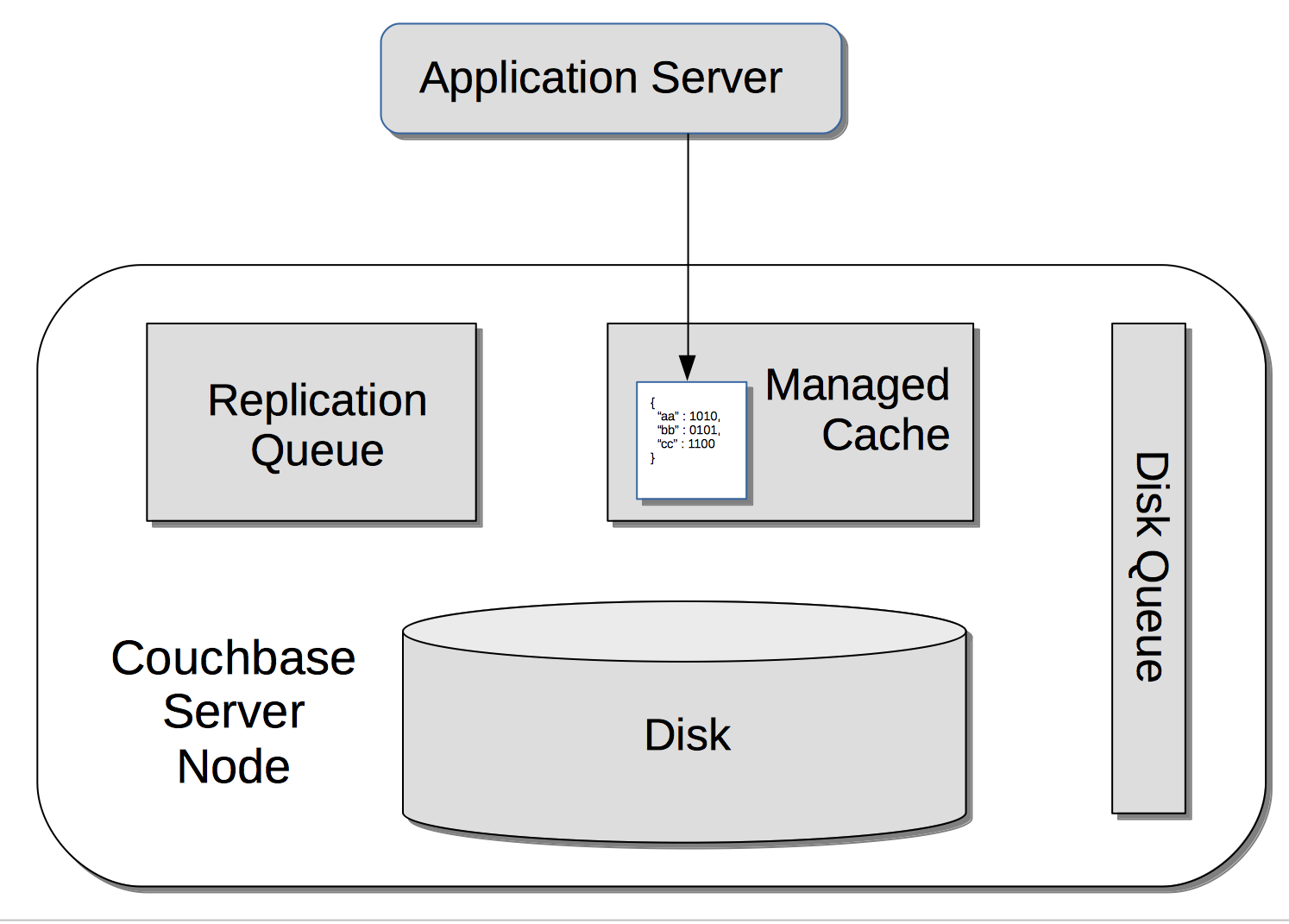What is an in-memory database? IMDBs are high-speed data storage systems that keep all data in the computer’s main memory (known as random access memory or RAM), making data retrieval and processing fast. This technology is ideal for applications that require real-time responses, like financial transactions, telecommunication systems, and online gaming. However, due to the volatile nature of RAM, these databases may use data replication to prevent data loss. Although storing data in memory can be more expensive compared to traditional disk storage, the increasing availability of affordable RAM and the value of speed in many modern applications make in-memory databases a valuable tool for many projects.
- How does an in-memory database work?
- Why use an in-memory database?
- Advantages and disadvantages of in-memory databases
- In-memory database comparison
- Couchbase’s in-memory database
How does an in-memory database work?
An in-memory database uses a blend of storage management, data handling, and fail-safe mechanisms like replication to offer increased data processing speeds. Here’s a simplified explanation of the key traits:
- Data storage: Unlike traditional databases, an IMDB stores all its data in the computer’s RAM. This provides faster access than retrieving data from a hard drive or an SSD.
- Data processing: With all data available in memory, IMDBs can process operations and execute queries directly within the memory. This significantly reduces latency, making IMDBs great for applications that need real-time responses.
- Data persistence: IMDBs can employ various data durability strategies to mitigate the volatile nature of RAM. Techniques include keeping a backup of data on disk or the use of replication to duplicate data across multiple nodes.
Why use an in-memory database?
In-memory databases offer speed for data access and processing, which provides a significant performance boost to your applications. By storing data in the computer’s main memory, IMDBs can enable faster, real-time responses.
In-memory database features
In-memory databases come packed with several distinct features that set them apart from traditional, more disk-heavy databases:
- Speed: The most significant feature of IMDBs is their speed. By keeping all data in the system’s main memory, data access and processing times are drastically reduced, resulting in very low latency responses.
- Real-time processing: Due to their high processing speeds, IMDBs are ideal for applications that require real-time or near-real-time responses.
- Data persistence: In addition to storing data in memory, some IMDBs have features to ensure data persistence and recovery. These features include asynchronous disk writes, snapshotting, and disk-based backups.
- Compression: IMDBs often support data compression to reduce the memory footprint and optimize storage.
- Scalability: IMDBs can be scaled up (adding more RAM) or scaled out (distributed over multiple systems) to handle large data volumes.
In-memory use cases and examples
In-memory databases are used extensively in various industries and applications due to their high-speed data processing capabilities. Common use cases include:
- Real-time recommendation and personalization: One of the most prominent use cases of IMDBs is real-time analytics. Businesses across sectors like finance, retail, and telecommunications use IMDBs to analyze large data streams in real time. For instance, financial institutions might use them for real-time fraud detection, while retailers use them for real-time personalization and recommendations. Wells Fargo, for example, built its fraud monitoring system using Couchbase’s in-memory database. Their system protects 100% of transactions in real time at speeds of less than 10 milliseconds per operation, or 9,000 reads and writes per second.
- Caching: IMDBs are commonly used for caching data, with frequently accessed data stored in memory for quick retrieval. This is especially useful for high-traffic web applications where rapid content delivery is critical to a good user experience. For example, LinkedIn transitioned to Couchbase as a caching solution for its source-of-truth data store, and Couchbase now supports over 50 use cases across the company.
- Session storage: IMDBs are often used for session management in web applications. where they store data like user profiles or shopping cart information to enable a fast and seamless user experience. Cisco migrated to Couchbase for reliable low latency and consistent response times, and now uses Couchbase to handle over 100 billion user sessions per year.
- Telecommunications: In the telecom sector, IMDBs handle call routing and session management, maintain customer profiles, and process large volumes of call detail records in real time. Vodafone uses Couchbase to manage and personalize millions of communications across various channels for over 17 million customers. Couchbase offers data security along with the scalability to expand on demand.
- Collaboration tools: Real-time collaboration tools like Bublup use IMDBs to simultaneously manage and sync changes across mobile and web apps for multiple users.
What are the advantages and disadvantages of in-memory databases?
In-memory databases present a unique set of benefits and drawbacks that can significantly impact your data management strategies. Here are the key advantages and disadvantages to consider:
Advantages
- Speed: Because IMDB data is stored in RAM, it can be accessed significantly faster than data stored on disk. This provides faster query responses and transaction times, making IMDBs a great choice for applications that require real-time data processing.
- Scalability: IMDBs can scale more easily to manage large data volumes. They can make good use of the increasing amount of memory available on modern hardware.
- Reliability: Despite data being stored in memory, IMDBs can still offer data durability and reliability. Techniques like replication, persistence, and transaction logging help protect against data loss.
Disadvantages
- Cost: RAM is more expensive than disk storage, so maintaining large amounts of data in memory can get expensive, especially for very large databases. When only a fraction of your overall data needs to be in RAM, a storage engine like Couchbase Magma can provide fast access to large amounts of data stored on disk.
- Volatility: RAM is volatile, meaning that if power is lost, so is the data. However, most IMDBs have mechanisms to persist data on disk or replicate it over the network to prevent data loss. Couchbase provides customers with several replication and persistence options.
- Hardware limitations: While memory sizes are increasing, there’s still a finite limit to how much an individual system can have. You can easily overcome single-system limits by using horizontal scaling like that provided by Couchbase Capella™ DBaaS.
In-memory database comparison
| In-memory database | Memory-first database | Disk-based database | |
|---|---|---|---|
| Performance | Usually fastest due to direct memory access that reduces disk I/O latency. | Faster than disk-based, but may not be as fast as pure in-memory due to potential disk I/O latency. | Typically slower due to disk I/O latency. |
| Cost | Tends to be more expensive due to the high cost of RAM. (RAM is usually only one part of the total cost.) | Medium cost. You can augment RAM with cheaper disk storage. | Often less expensive due to reliance on disk storage. |
| Data persistence | Often volatile. Data may be lost upon restart or failure if durability features are not used. | Provides persistence, which reduces the risk of data loss despite primary reliance on memory. | Highly persistent. Data is stored even if the system shuts down. |
| Scalability | Limited by available RAM unless horizontal scaling is possible. | Higher scalability as it can use disk storage for larger datasets. | Can store data on large disks, but may not be able to keep up with I/O demands. |
| Data access patterns | Best for workloads with high operation rates and low latency. Most are optimized for transient data storage. | Good for workloads with a mix of read and write operations. Low to moderate latency requirements. | Best for write-heavy, long-term storage, or analytical workloads, or if performance is of low concern. |
| Use cases | Real-time analytics, caching, session storage, or anything transient. | General purpose, including real-time and near-real-time applications, caching, and mixed workloads. | Large-scale data storage and applications with requirements that don't change frequently. |
| Examples |
|
CouchStore or Magma (Available in both Couchbase Capella and Couchbase Server.) | Typical deployments of SQL Server, Oracle, Postgres, MySQL, etc. (These may use memory for buffering and caching query plans, and some may have add-ons for increased caching.) Compare to NoSQL. |
Couchbase’s in-memory database
Couchbase’s in-memory, highly available, distributed caching technologies deliver high-speed responses even at high volumes. The newest in-memory development in the Couchbase ecosystem is the introduction of memory-only buckets support within Couchbase Capella Database-as-a-Service (DBaaS). Capella has always supported caching with high-speed in-memory storage, simultaneously persisting data back to disk to prevent data loss. (This method is still the default.) The introduction of memory-only buckets allows customers to opt for data to be stored solely as a cache without it being written to disk.
CouchStore memory-first architecture: The memory-only option forgoes the disk and disk queue portions of the architecture for increased performance.
The memory-only feature in Capella is a useful addition for applications that require caching. Transient or ephemeral data, which may not need to persist permanently to disk, can now be managed more effectively. This feature can increase application performance by reducing data trips to disk, while the flexibility in data management can reduce disk costs.
Memory-only data is highly beneficial in high-traffic scenarios in which preloaded data in the cache can quickly meet usage spikes. In-memory database example use cases include:
- Session management for web applications
- Performance improvement through caching mechanisms
- Managing anonymous information
- Enhancing security and privacy by limiting exposure to sensitive data
With Capella, users can define a bucket as memory-only during its creation. Within a single database, both “memory-only” and “memory and disk” buckets can be used side by side for different use cases. This capability makes Capella a future-proof choice for caching needs because it can easily expand to encompass more-advanced use cases as they arise.



